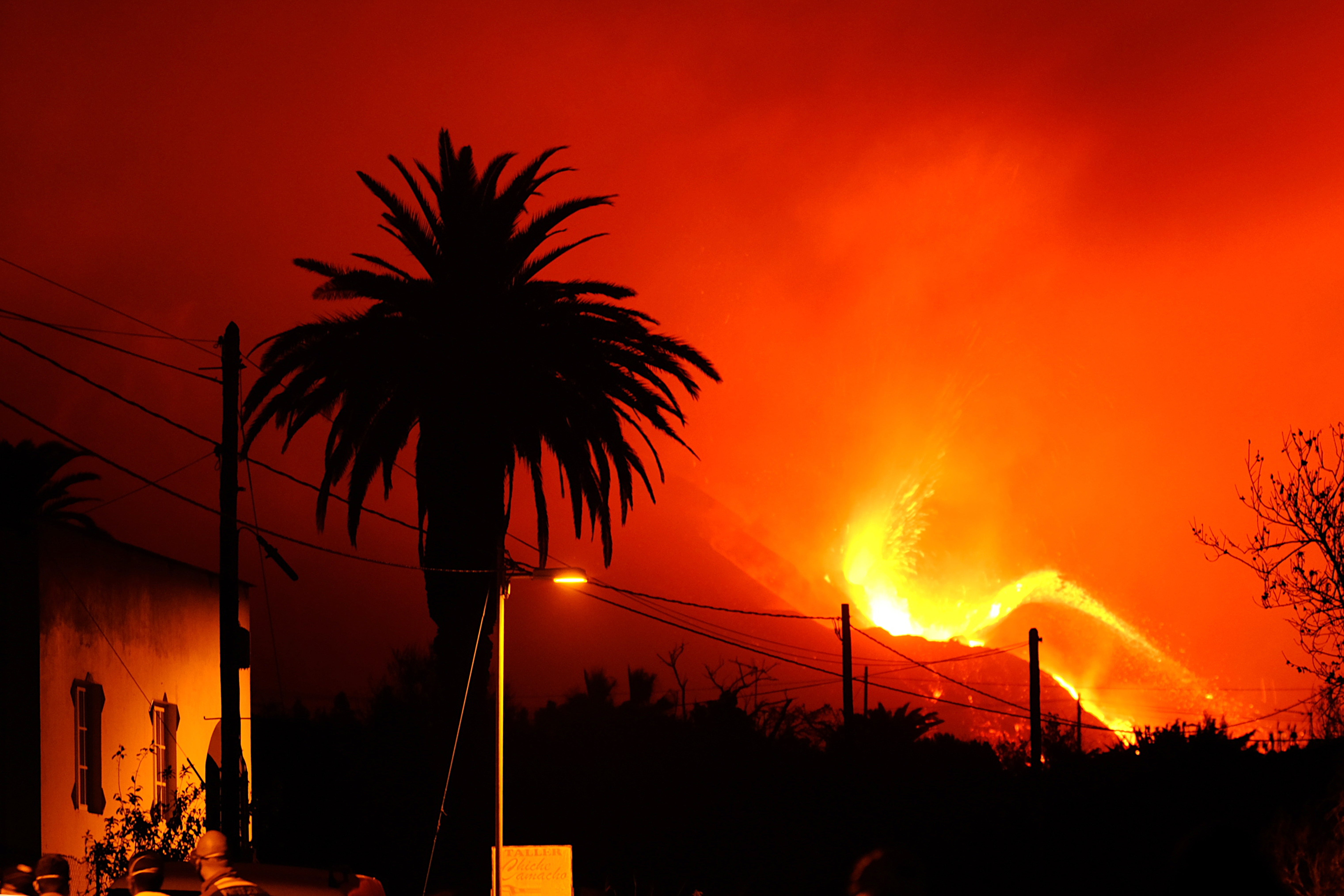La Palma's volcanic eruption is going strong 3 weeks later
The volcano on Spain’s La Palma island keeps spewing out endless streams of lava with no signs of ceasing three weeks since its initial eruption

Your support helps us to tell the story
From reproductive rights to climate change to Big Tech, The Independent is on the ground when the story is developing. Whether it's investigating the financials of Elon Musk's pro-Trump PAC or producing our latest documentary, 'The A Word', which shines a light on the American women fighting for reproductive rights, we know how important it is to parse out the facts from the messaging.
At such a critical moment in US history, we need reporters on the ground. Your donation allows us to keep sending journalists to speak to both sides of the story.
The Independent is trusted by Americans across the entire political spectrum. And unlike many other quality news outlets, we choose not to lock Americans out of our reporting and analysis with paywalls. We believe quality journalism should be available to everyone, paid for by those who can afford it.
Your support makes all the difference.Three weeks since its eruption upended the lives of thousands, the volcano on Spain’s La Palma island is still spewing out endless streams of lava with no signs of ceasing.
Authorities on Sunday monitored a new stream of molten rock that has added to the destruction of over 1,100 buildings. Anything in the path of the lava — homes, farms, swimming pools and industrial buildings in the largely agricultural area — has been consumed.
The collapse Saturday of part of the volcanic cone sent a flood of bright red lava pouring down from the Cumbre Vieja ridge that initially cracked open on Sept. 19. The fast-flowing stream carried away huge chunks of lava that had already hardened. An industrial park was soon engulfed.
“We cannot say that we expect the eruption that began 21 days ago to end anytime soon,” said Julio Pérez, the regional minister for security on the Canary Islands.
La Palma is part of Spain’s Canary Islands, an Atlantic Ocean archipelago off northwest Africa whose economy depends on the cultivation of the Canary plantain and tourism.
The new rivers of lava have not forced the evacuation of any more residents since they are all so staying within the exclusion zone that authorities have created. Some 6,000 residents were promptly evacuated after the initial eruption.
Government experts estimated that the largest of the lava flows measures 1.5 km (.9 miles) at its widest point, while the delta of new land being formed where lava is flowing into the Atlantic has reached a surface of 34 hectares (84 acres).
The scientific committee advising the government said that if the delta continues to grow outwards into the sea, parts of it could break off. That would generate explosions, gas emissions and large waves, committee spokeswoman José María Blanco said, but should not represent a danger to those outside the no-go zone.
The Canary Islands' tourism industry was already hard hit by the pandemic, and officials were urging tourists not to keep staying away.
“This eruption is impacting a part of the island, but La Palma is still a safe place and can offer a lot to those who visit,” said Mariano Hernández, the island’s leading authority.
The last eruption on La Palma 50 years ago lasted just over three weeks. The last eruption on all the Canary Islands occurred underwater off the coast of El Hierro island in 2011 and lasted five months.
___
Read all AP stories on the La Palma volcano at https://apnews.com/hub/volcanic-eruptions